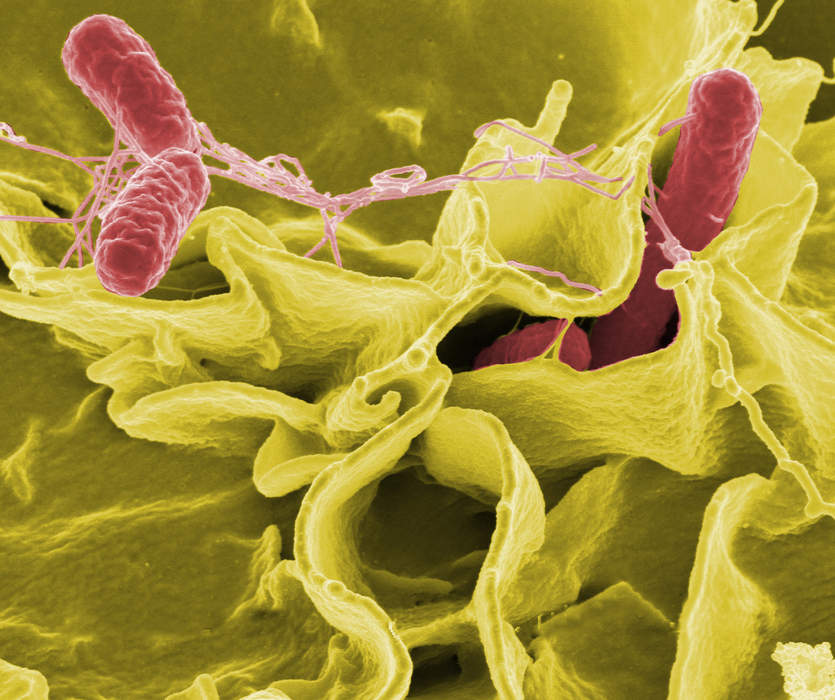Salmonellosis
Infection caused by Salmonella bacteria
Salmonellosis ▸ Facts ▸ Comments ▸ News ▸ Videos

Salmonellosis is a symptomatic infection caused by bacteria of the Salmonella type. It is the most common disease to be known as food poisoning, these are defined as diseases, usually either infectious or toxic in nature, caused
by agents that enter the body through the ingestion of food. In humans, the most common symptoms are diarrhea, fever, abdominal cramps, and vomiting. Symptoms typically occur between 12 hours and 36 hours after exposure, and last from two to seven days. Occasionally more significant disease can result in dehydration. The old, young, and others with a weakened immune system are more likely to develop severe disease. Specific types of Salmonella can result in typhoid fever or paratyphoid fever. Typhoid fever and paratyphoid fever are specific types of salmonellosis, known collectively as enteric fever, and are, respectively, caused by salmonella typhi & paratyphi bacteria, which are only found in humans. Most commonly, salmonellosis cases arise from salmonella bacteria from animals, and chicken is a major source for these infections.
| 0 shares | ShareTweetSavePostSend |
You Might Like
No news matches foundSorry, we were unable to find any results in our database for your queryFree news archive accessDid you know? You are eligible to search our news archive with millions of news references free of charge. To do this, please sign in first at the top of the screen. • Information about free access to our news archive Search this site and the web:  |
